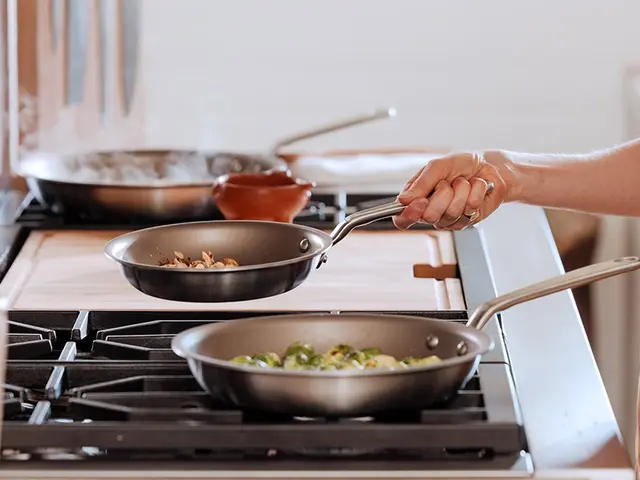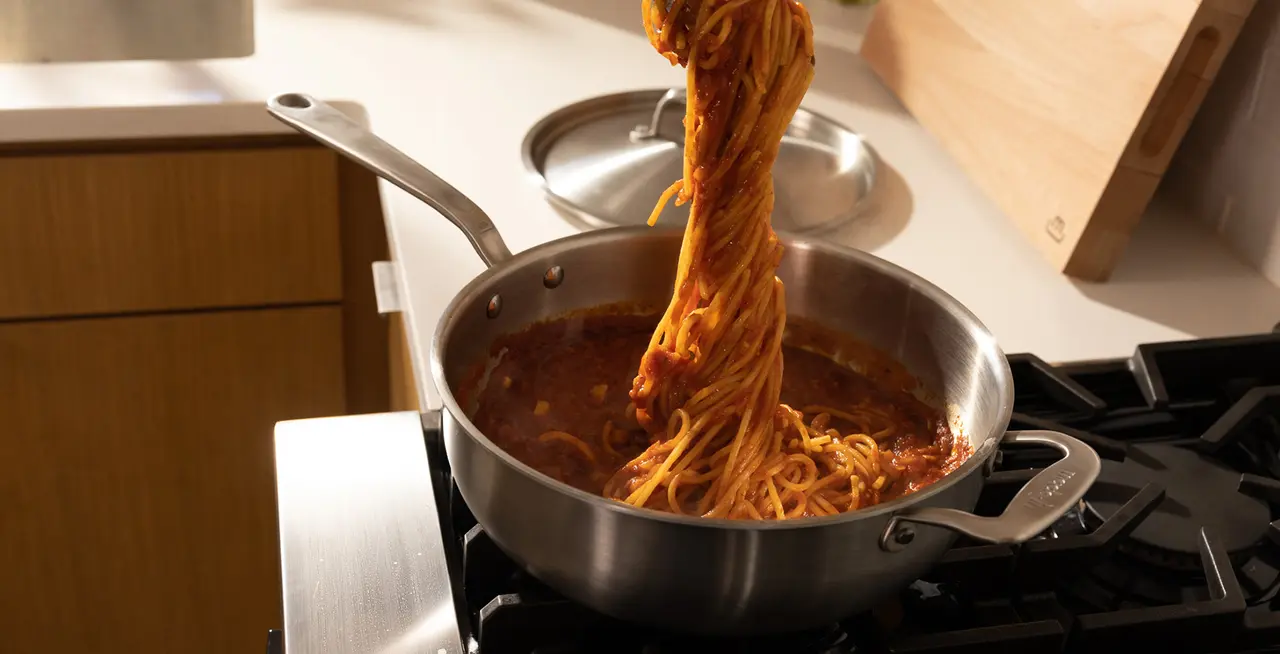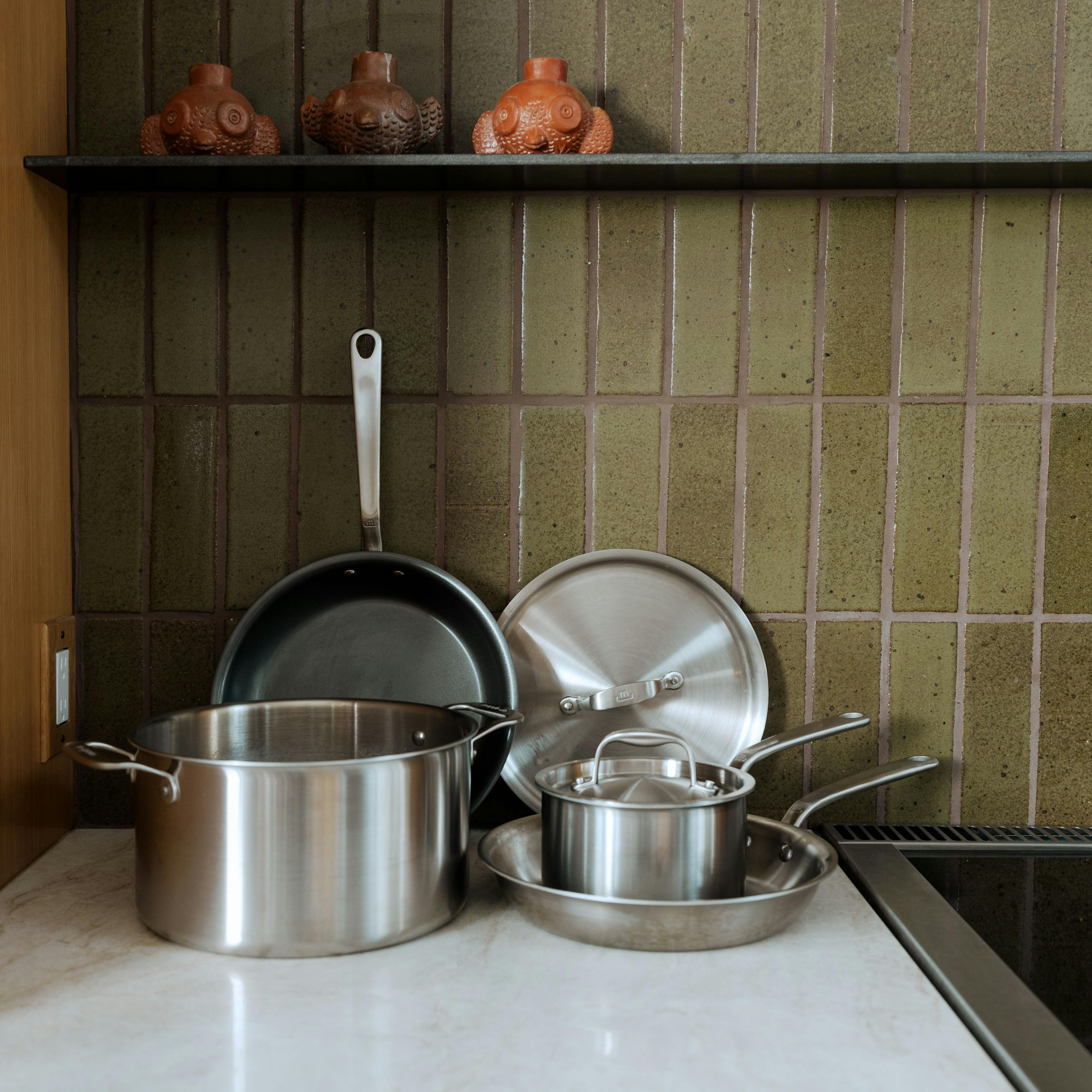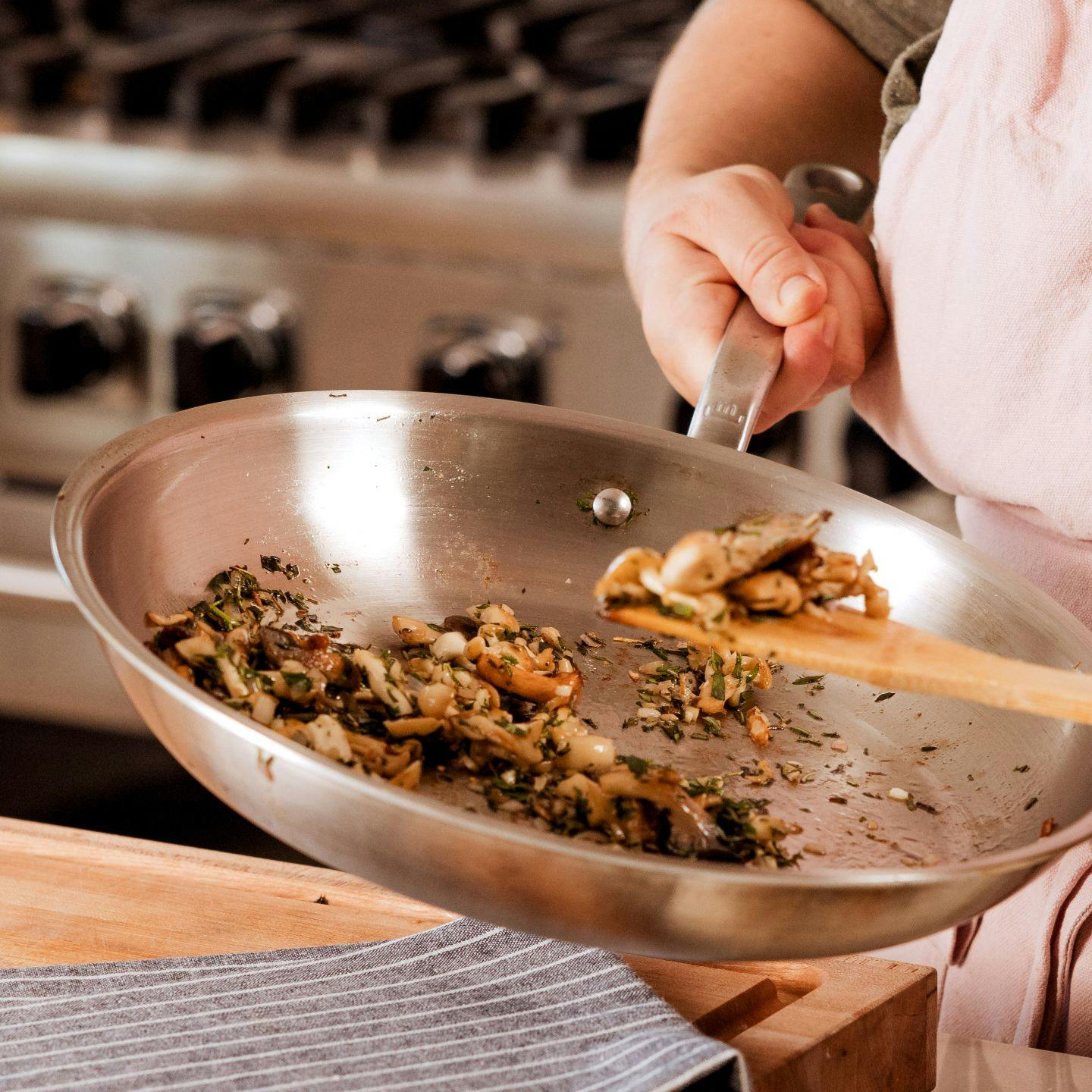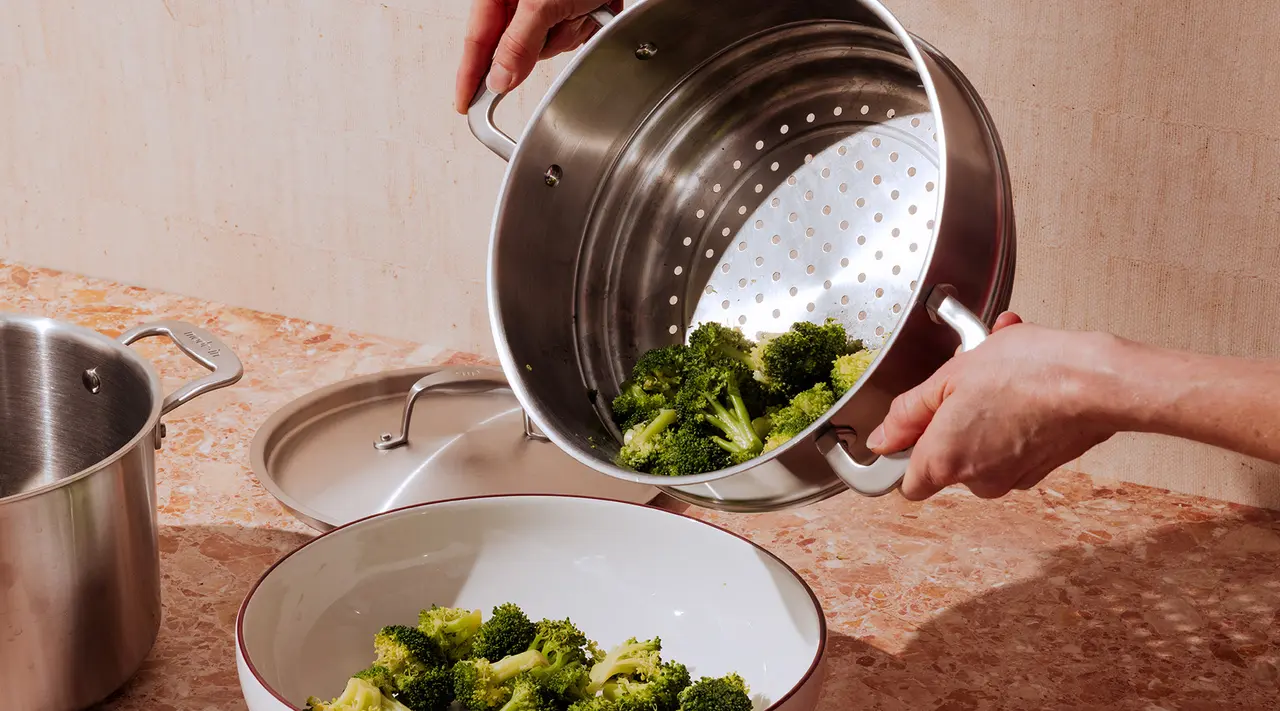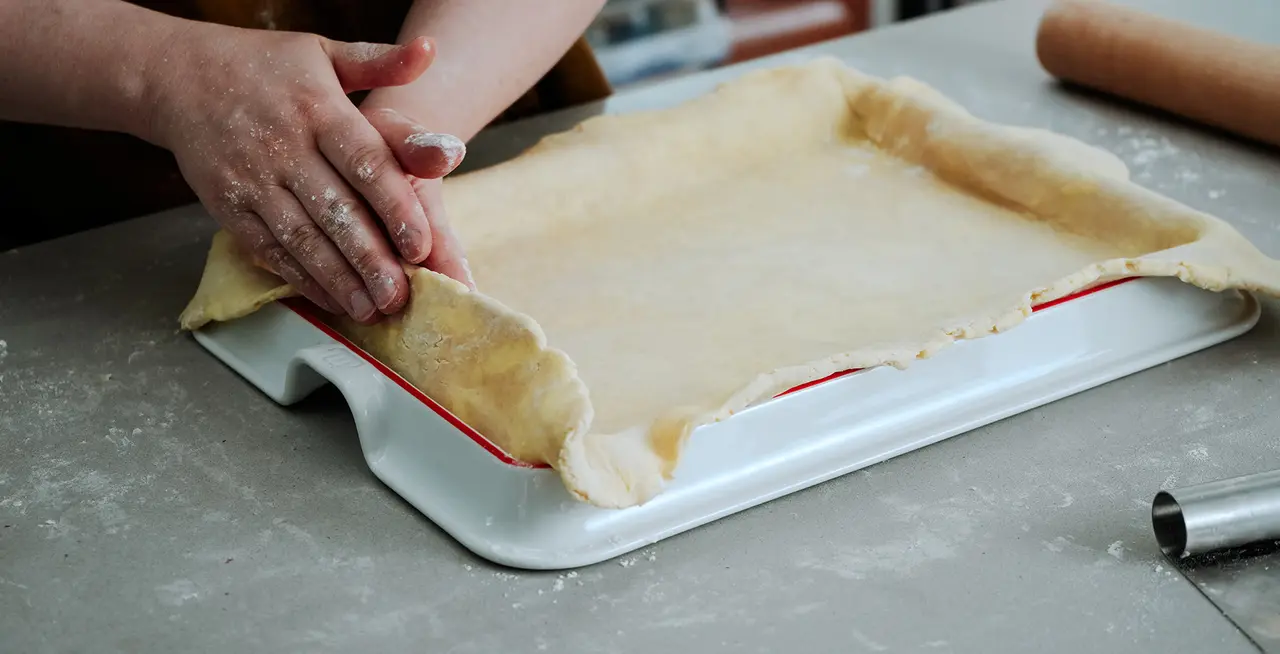Making tomato-based sauce is an essential skill in home cooking. Whether you’re making a quick weeknight pasta, dressing a labored-over pizza dough, or creating the base for an eggplant parmesan, nailing the sauce makes all the difference. Unpacking the subtle differences between marinara and tomato sauce, the two encompassing most tomato-based sauces, is a good place to start.
Tomato sauce, one of the five French mother sauces, is achieved by cooking tomatoes with fat (traditionally butter), adding stock, then reducing for over an hour, resulting in a thicker, creamier tomato-based sauce. Think the classic Marcella Hazan sauce that’s more akin to tikka masala than something you’d find at your local Italian-American restaurant.
Marinara (also called red sauce) is tomato sauce’s thinner, quicker-cooking sister. Recipes vary, but ingredients will often comprise garlic, onion, bay leaves, red pepper flakes, olive oil, oregano, and tomato paste. When you think of “spaghetti sauce”, you’re likely thinking of marinara.
While the two sauces share many ingredients, the main difference is in the consistency and depth of flavor. Marinara is brighter, thinner, and more tomato forward than tomato sauce. Tomato sauce is thicker, creamier, and bears some similarity with gravy, hence why some Italians call it “Sunday gravy”.
What Is Marinara Sauce?
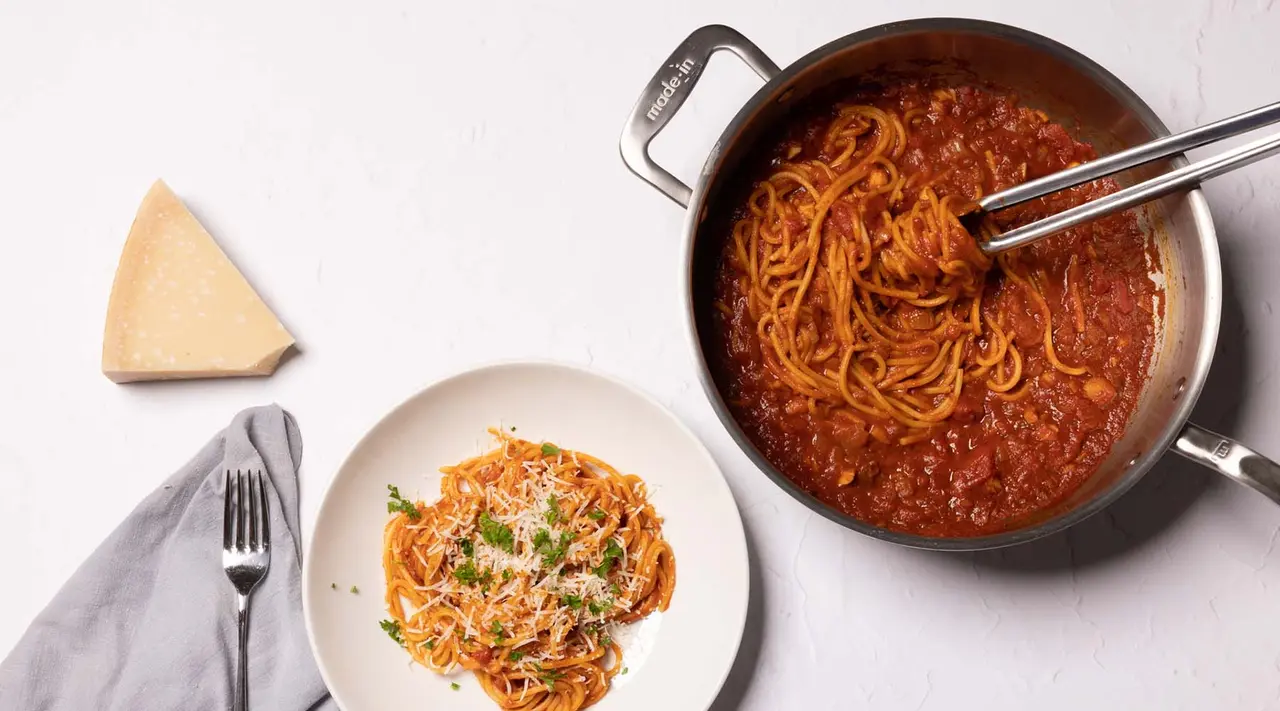
Marinara is what usually comes to mind when most people think of a tomato-based sauce. Also referred to as “pasta sauce”, it begins with sauteing onions and garlic in a Dutch Oven. Next, tomato paste is added to the pan, followed by a generous quantity of crushed tomatoes.
The sauce is then seasoned with red pepper flakes, basil, and oregano, and brought to a simmer for around 45 minutes until the raw tomato flavor has been fully cooked off. Southern Italian recipes will often call for a skillet instead of a Dutch Oven and skip the onions, but, as with tomato sauce, there are many variations based on region, tradition, and taste.
If you’re working with canned tomatoes, make sure you’re getting a high quality product, as that’s the predominant flavor. We especially like Bianco diNapoli tomatoes, which are used in professional kitchens as well because of their unmatched flavor. Feel free to use fresh basil and tomatoes during the summer months when many varieties can be found locally. Regardless of which tomatoes you use, with basic cooking techniques and a little bit of patience, you’ll achieve a sauce that’s better than anything you can buy off the shelf, in under an hour.
When to Use MarinaraThere are a few different ways you can put a freshly made marinara sauce to use beyond dressing pasta. This sauce has a variety of uses, including as a dipping sauce for bread or calzones, on pizza (as tomato sauce can usually prove too thick and assertive for pizzas), and for dressing sandwiches (like an Italian sausage sandwich).
What Is Tomato Sauce?
Tomato sauce (also called “sauce tomat” in French) simmers longer than marinara, but better supports proteins like veal, chicken, pork, fish, or beef in a dish. Tomato sauce also starts in a large Saucepan or Dutch Oven with sautéed onions. Butter or animal fat (traditionally salt pork or bacon) is often called for instead or in addition to olive oil, with flour added to help thicken the sauce. Stock, aromatics, and seasoning are then added to the pot and to simmer for an hour, though the sauce can go longer depending on the desired consistency.
The combination of a longer cook time and a base of animal fat deepens the flavor of tomato sauce when compared with marinara. Like any tomato-based sauce, there are plenty of different ways to approach tomato sauce. It can simmer all day or for 45 minutes, contain chunks of ingredients or be pureed smooth, and can incorporate many different ingredients depending on the dish.
When to Use Tomato SauceThe thicker consistency and more complex flavor that makes tomato sauce less ideal for pizza sauce makes it perfect for smothering foods and highlighting ingredients like meatballs or fish. Tomato sauce works well for spaghetti and meatballs and in lasagna, but has many other uses as well—such as on chicken cacciatore, eggplant or chicken parmesan, and as a base for eggs in purgatory or shakshuka.
Can I Substitute One for Another?
When it comes to marinara versus tomato sauce, one is not better than another. Usage depends on what you’re trying to cook, and familiarity with the process and philosophy behind each will help you decide which to use. Many recipes can accommodate either marinara or tomato sauce.
For example, both tomato-based sauces can be used for pasta, but the heavier, more complex tomato sauce can overpower lighter, simpler dishes, while marinara is less ideal for smothering proteins or filling out lasagnas.
Ready to Cook?
If you’re looking for a meaty sauce that blends elements from both marinara and tomato sauce, check out Chef Tracy Malechek-Ezekiel’s recipe for Spaghetti Bolognese. She starts with a base of olive oil, followed by a mirepoix to add a bit of vegetal sweetness and texture. The sauce is then enriched with a blend of beef and pork, plus red wine, and heavy cream. Chef Malechek-Ezekiel finishes the sauce with butter and grated parmesan for a hearty weeknight dinner that still comes together in under an hour.
